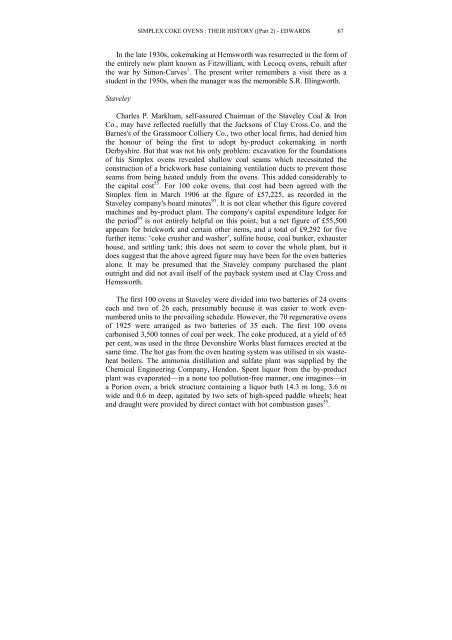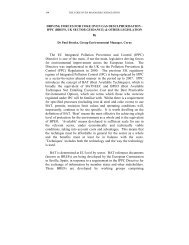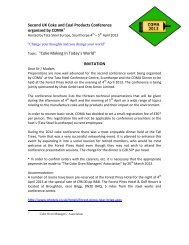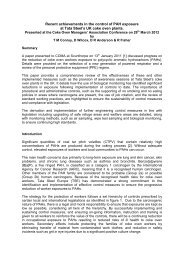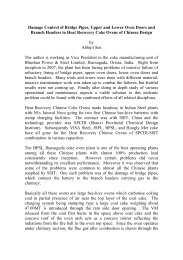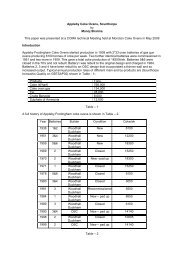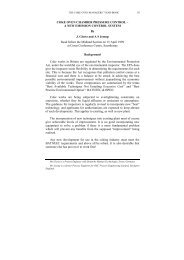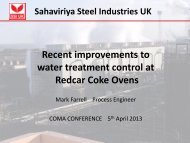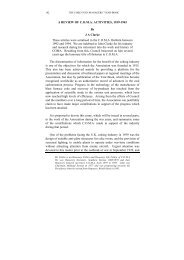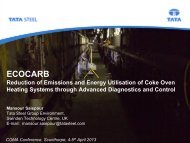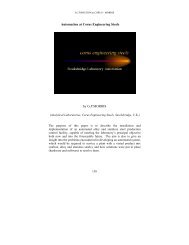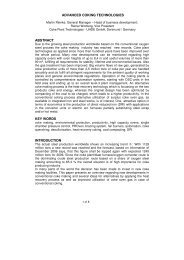CHAIRMAN'S ADDRESS - Coke Oven Managers Association
CHAIRMAN'S ADDRESS - Coke Oven Managers Association
CHAIRMAN'S ADDRESS - Coke Oven Managers Association
- No tags were found...
Create successful ePaper yourself
Turn your PDF publications into a flip-book with our unique Google optimized e-Paper software.
SIMPLEX COKE OVENS : THEIR HISTORY ([Part 2) - EDWARDS 67In the late 1930s, cokemaking at Hemsworth was resurrected in the form ofthe entirely new plant known as Fitzwilliam, with Lecocq ovens, rebuilt afterthe war by Simon-Carves 1 . The present writer remembers a visit there as astudent in the 1950s, when the manager was the memorable S.R. Illingworth.StaveleyCharles P. Markham, self-assured Chairman of the Staveley Coal & IronCo., may have reflected ruefully that the Jacksons of Clay Cross Co. and theBarnes's of the Grassmoor Colliery Co., two other local firms, had denied himthe honour of being the first to adopt by-product cokemaking in northDerbyshire. But that was not his only problem: excavation for the foundationsof his Simplex ovens revealed shallow coal seams which necessitated theconstruction of a brickwork base containing ventilation ducts to prevent thoseseams from being heated unduly from the ovens. This added considerably tothe capital cost 55 . For 100 coke ovens, that cost had been agreed with theSimplex firm in March 1906 at the figure of £57,225, as recorded in theStaveley company's board minutes 93 . It is not clear whether this figure coveredmachines and by-product plant. The company's capital expenditure ledger forthe period 94 is not entirely helpful on this point, but a net figure of £55,500appears for brickwork and certain other items, and a total of £9,292 for fivefurther items: ‘coke crusher and washer’, sulfate house, coal bunker, exhausterhouse, and settling tank; this does not seem to cover the whole plant, but itdoes suggest that the above agreed figure may have been for the oven batteriesalone. It may be presumed that the Staveley company purchased the plantoutright and did not avail itself of the payback system used at Clay Cross andHemsworth.The first 100 ovens at Staveley were divided into two batteries of 24 ovenseach and two of 26 each, presumably because it was easier to work evennumberedunits to the prevailing schedule. However, the 70 regenerative ovensof 1925 were arranged as two batteries of 35 each. The first 100 ovenscarbonised 3,500 tonnes of coal per week. The coke produced, at a yield of 65per cent, was used in the three Devonshire Works blast furnaces erected at thesame time. The hot gas from the oven heating system was utilised in six wasteheatboilers. The ammonia distillation and sulfate plant was supplied by theChemical Engineering Company, Hendon. Spent liquor from the by-productplant was evaporated—in a none too pollution-free manner, one imagines—ina Porion oven, a brick structure containing a liquor bath 14.3 m long, 3.6 mwide and 0.6 m deep, agitated by two sets of high-speed paddle wheels; heatand draught were provided by direct contact with hot combustion gases 55 .


